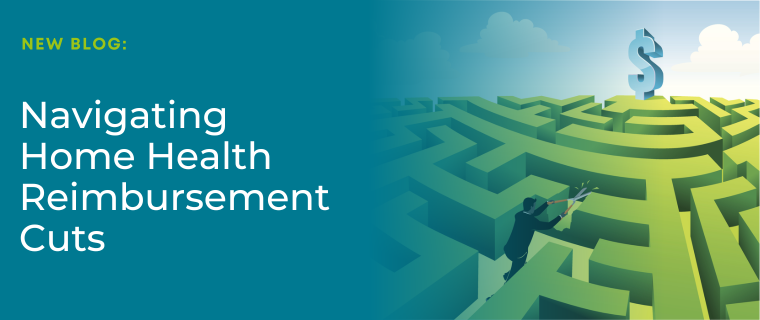Readmission Reduction is a Subsequent Benefit of the Real Solution
Although all of us in the healthcaresphere havebeen focusing on reducing readmissions, it’s not the full solution.
While reducing readmissions is definitely important, especially to home health providers, afterall our hospital partners are penalized when readmitted within 30 days of discharge, readmission reduction is a subsequent benefit of the real solution. What’s the real solution?…
Ensuring your agency is able to provide the most appropriate care for your patients, through episode management optimization.
Easier said than done, right? (Well, we can help simplify it. We’ll tell you how in just a minute.) The average home health agency sustains an 11-15 percent TIF (transfer to inpatient facility) rate. So if you have an average daily census of 1,500 patients, 250 patients may transfer off your census.
That’s why we’ve developed a home health patient episode management solution,Medalogix Touch, which studies show can help reduce relative TIFs by 20.1 percent. (Don’t worry, this is the only part of the blog that’s kinda salesy.)
Touchhelps you best manage your home healthcare episodes with analytics, Interactive Voice Response (IVR) call scheduling and end of episode planning.With this trifecta, you will have the insight needed to effectively manage your patients and make informed decisions regarding their ongoing care.When you do that, this will positively impact your outcomes and as an added benefit, your organization’s bottom line.
Here are a handful of benefits that come when providers correctly determine which patients need to be kept on their home health census and then provide them the most appropriate care:
- Facilitates Consistency, Continuity, and Coordination(the 3Cs of seamless patient care outlined by the CommonWealth Fund’s Quality Matters publication): When home health providers have the necessary tools to better monitor progress and continued risk for rehospitalization, they can make better decisions. It’s a seamless care experience where the clinical care team can make more informed decisions for their patients’ ongoing care, whether that’s continuing a patient’s services with your agency or safely discharging the patient to a more appropriate level of care. As a result, the patients receives consistent, continual and coordinated care and it’s no surprise that this results in a more optimal care experience for the patient.
- Reduces readmissions.When you monitor at risk patients and provide increased visits and phone calls, you can improve your hospital readmission rate.One Touch client reduced readmissions by a relative rate of nearly 36 percent. When home health providers intervene to prevent readmissions, they not only save patients from the scary and costly experience of going back to the hospital, they also help ensure their hospital partners avoid hefty readmission penalties. When you’re a better partner to your hospital partners, that’s better for your home health business and ultimately better for your patient population.
- Helps better manage episodes at risk for LUPAs.If a patient leaves the home health census before he or she receives four or fewer home health visits, Medicare will decrease the home health agency’s reimbursement. It’s called “low utilization payment adjustment” or LUPA. Of course, sometimes LUPAs are an inevitable outcome, but often they are simply the result of lack of visibility into visit utilization for at-risk patients.
By identifying high-risk patients quickly with Medalogix risk stratification and adjusting a patient’s visit frequency based on his or her need early transfers off of census may be prevented.
- Keeps appropriate patients within your agency’s continuum of care.When you keep patients on your census who need home health care, you have the opportunity to continue caring for them when they need more care. On the other side of the coin, if a patient transfers off census, he or she may choose a different home health agency for his or her next home health stay. You’ve lost that patient not only for one home health episode, but for any additional care episode that patient may require.
It’s not rocket science. When a home health patient stays within your agency’s care, he or she is receiving care from you rather than another care provider. When you’re providing top-notch care, and fostering continuity, you’re improving your bottom line.What do you estimate your operational and financial benefit would be if you had a solution to help tackle the challenges of effective episode management?
Related Blogs

Navigating CY 2025 Home Health Reimbursement Cuts: Medalogix Offers Innovative Solutions to Enhance Efficiency and Outcomes
As the Home Health industry grapples with the CY 2025 proposed rule, we ...

Solving the Home Health Maze: Referral & Intake
The CMS Office of Burden Reduction & Health Informatics (OBRHI) coll...

Medalogix Muse and the Proposed Regulatory Changes for FY 2025
Steven Shelton, MBA, MSN, RN, CHPN; Director, Clinical Services In th...


